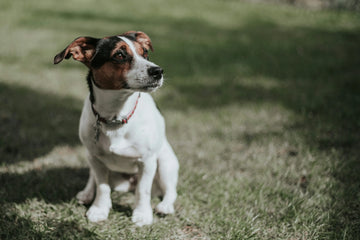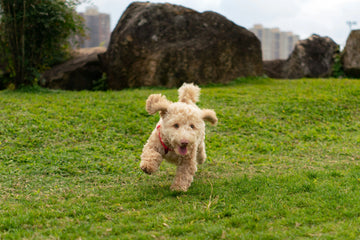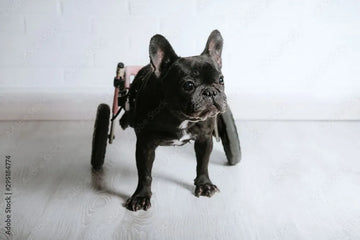In our daily lives with our furry friends, we often encounter moments that seem simple yet full of challenges. It tugs at our heartstrings when we see an elderly dog struggling to jump onto their beloved sofa, or a small dog anxiously pacing around the bed, too scared to jump up.
In fact, with a suitable dog stairs and scientific training methods, we can help them regain their ability to move around effortlessly. Today, let's delve into how we can help our dogs learn to use stairs, making their lives more comfortable and enjoyable.

Why Your Dog Needs Dog Steps
Before starting the training, we need to understand why dog stairs are so important.
First, for senior dogs, joint wear and degeneration often cause varying degrees of pain, and frequent jumping undoubtedly aggravates this discomfort.
Second, for small-sized dogs, what seems like a low bed or sofa to us might appear like a mountain to them, requiring significant energy for each jump and potentially leading to injuries from improper jumping.
Moreover, even for young and healthy dogs, repeated jumping over time can cause cumulative damage to their joints, which may affect their quality of life in the future.

5 Steps to Quickly Teach Your Dog to Use Dog Steps
1. Help Your Dog Adapt to the Steps
Place the dog steps in a room where your dog often spends time, allowing them to explore freely. You can place some treats or toys on the lowest step to encourage them to engage with the steps and create a positive association.
2. Position Near Favorite Furniture
Place the dog steps next to a favorite sofa or bed, sitting at the top of the dog stairs to attract your dog to climb up to you. This can spark their interest and increase their willingness to try.
3. Gradual Guidance
Place treats on each step to encourage your dog to climb gradually. When your dog successfully reaches a treat, praise and reward them, even if all four paws are still on the ground.
4. Gradually Reduce
Treats As your dog becomes accustomed to the steps, start to gradually reduce the number of treats on each step. The ultimate goal is for your dog to use the steps confidently without treats.
5. Reverse Training
To help your dog learn to go down the steps, repeat the above steps, starting from the bottom of the dog stairs and gradually training your dog to go up and down.

Tips to Remember When Training Your Dog
Use Treats
Flexibly During training, using treats as rewards can effectively motivate your dog to try using the steps.
Use a Support Harness if Necessary
For older dogs, consider using a support harness to help them up and down the **dog stairs**, ensuring they feel safe and comfortable during training.
Patience and Repetition
Learning takes time for dogs, and patience and repetition are key to success. Maintain a positive attitude and continually encourage your dog to build their confidence during training.

FAQ
1. Why Won't My Dog Use the Dog Steps?
Dogs may feel scared of new things, especially older dogs that might hesitate due to joint pain. Give them time to adapt and guide them patiently.
2. What Are the Benefits of Dog Steps?
Dog steps help small and older dogs easily access furniture, protect their joints, reduce the risk of injury, and lessen the burden on owners who frequently lift their dogs.
3. What Kind of Dog Steps Should I Choose?
When selecting steps, ensure they are sturdy and have a non-slip surface to prevent your dog from slipping while using them. Material choice is also important; make sure they are durable enough.
4. How Can I Increase My Dog's Interest in the Steps?
You can place your dog's favorite toys next to the steps or put treats on the steps to encourage them to engage with the steps actively.

In helping dogs learn to use stairs, what matters most is not the speed but the interactive process filled with love and patience. Through scientific training methods, combined with appropriate tools and plenty of positive reinforcement, we believe every dog can eventually master using stairs with ease. This not only makes their lives more convenient but also strengthens the emotional bond between you and your pet.
Remember, every bit of progress, no matter how small, deserves sincere praise and encouragement. Let's accompany our furry friends with love and patience as they overcome challenges step by step, creating a better life together!





